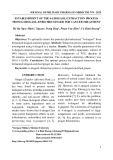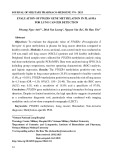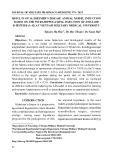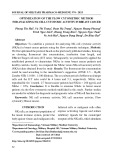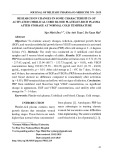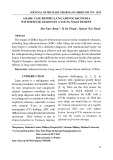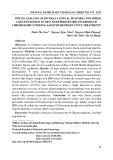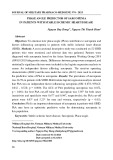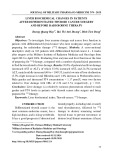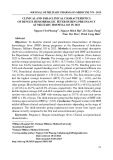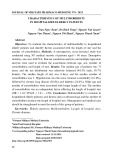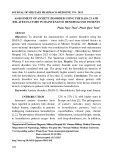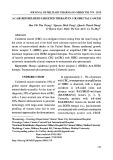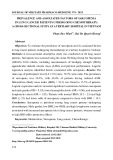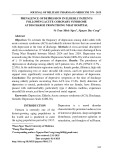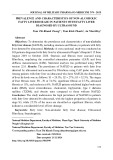
JOURNAL OF MILITARY PHARMACO-MEDICINE N04 - 2025
59
INITIAL ANALYSIS OF SEVERAL CLINICAL FEATURES AND SPERM
CONCENTRATION IN MEN WITH PERICENTRIC INVERSION OF
CHROMOSOME 9 FINDING ASSISTED REPRODUCTIVE TREATMENTS
Trinh The Son1*, Nguyen Ngoc Nhat1, Nguyen Minh Phuong1
Dinh Van Sinh2, Ho Sy Hung3
Abstract
Objectives: To evaluate some clinical features and sperm concentration among
men with pericentric inversion of chromosome 9, and to find assisted reproductive
treatments. Methods: A retrospective, descriptive study was conducted on 36 men
with pericentric inversion of chromosome 9 at the Military Institute of Clinical
Embryology and Histology, Vietnam Military Medical University, from January
2020 to December 2023. Age, height, weight, and body mass index (BMI) were
recorded. Semen analysis was conducted according to World Health Organization
(WHO) 2021 guidelines. Results: 36 male patients with pericentric inversion of
chromosome 9 were observed, of which the majority had variant
46,XY,inv(9)(p11q13) with a rate of 72.22%. Evaluation of clinical characteristics
showed that height, weight, and BMI were all within the normal ranges for men.
Semen analysis: 24/36 patients (66.67%) had normal sperm concentration; only
12/36 patients (33.33%) were observed to have a slight decrease in sperm
concentration; no cases of severe oligozoospermia or azoospermia were recorded.
A case of pericentric inversion of chromosome 9 was recorded as inherited in the
family after natural reproduction. Conclusion: In men who found assisted
reproductive treatments in our assisted reproductive center and were recorded
pericentric inversion of chromosome 9 in the karyotype, age, height, weight, and
BMI were all within the normal ranges of Vietnamese people and manifested mild
oligozoospermia or normal sperm concentration.
Keywords: Pericentric inversion of chromosome 9; Oligozoospermia; Assisted
reproduction.
1Military Institute of Clinical Embryology and Histology, Vietnam Military Medical University
2Nghe An General Hospital
3National Hospital of Obstetrics and Gynecology
*Corresponding author: Trinh The Son (trinhtheson@vmmu.edu.vn)
Date received: 28/10/2024
Date accepted: 23/12/2024
http://doi.org/10.56535/jmpm.v50i4.1072





